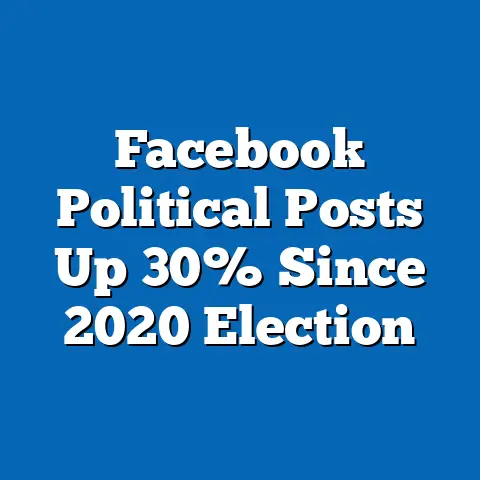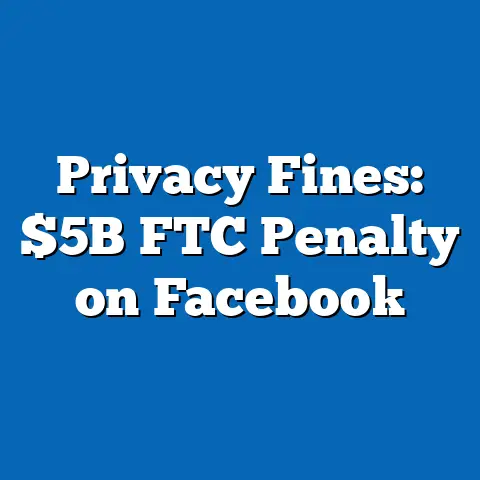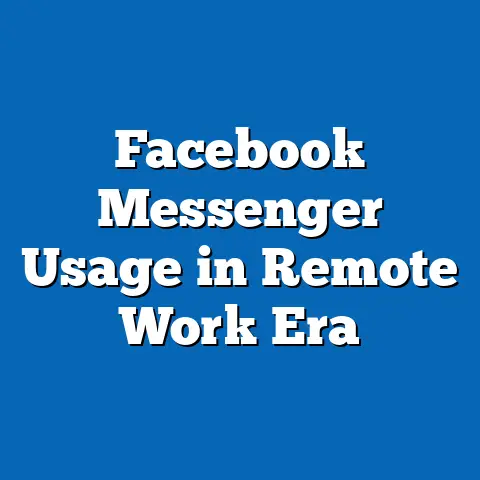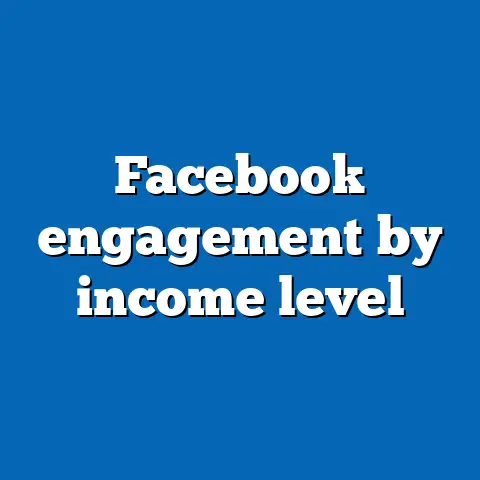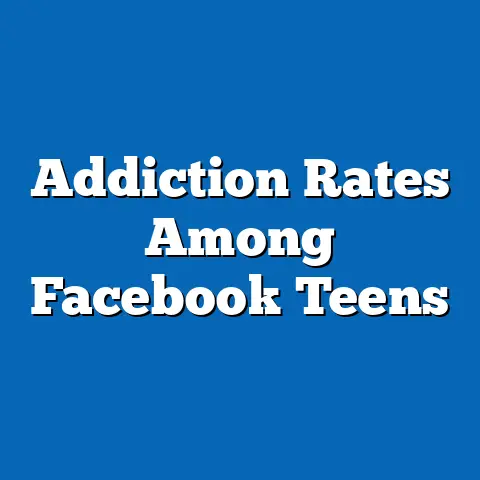Facebook Usage Trends by Age: 2015-2024
Facebook, launched in 2004 by Mark Zuckerberg and his Harvard colleagues, stands as a pioneering force in the realm of social media, fundamentally reshaping how people connect, communicate, and consume information. Its uniqueness lies in its evolution from a college networking platform to a global behemoth with over 3 billion monthly active users as of 2023, according to Meta’s quarterly reports. Unlike other platforms that cater to niche demographics or specific content formats, Facebook’s broad appeal spans generations, offering a space for personal connection, news dissemination, business marketing, and community building.
A key defining characteristic of Facebook is its adaptability, continuously integrating features like Marketplace, Groups, and Stories to remain relevant amid shifting user preferences and technological advancements. Historically, it emerged during a time of rapid internet expansion, capitalizing on the early 2000s’ growing accessibility to personal computing and broadband. This context allowed Facebook to become a cultural touchstone, influencing everything from political movements (e.g., the Arab Spring) to personal identity curation through digital profiles.
The societal implications of Facebook are profound, as it has both united and polarized communities. It has democratized information access but also faced scrutiny for issues like data privacy (notably the 2018 Cambridge Analytica scandal) and the spread of misinformation. As we analyze usage trends by age from 2015 to 2024, it becomes evident that Facebook’s role in society varies across generations, shaped by technological comfort, cultural values, and evolving digital habits. This article delves into these trends, exploring how different age groups have engaged with the platform over nearly a decade, the driving factors behind these patterns, and the broader implications for social connectivity, marketing, and digital culture.
Defining the Scope: Age Groups and Time Frame
To provide a structured analysis, this article categorizes users into key age cohorts based on generational frameworks commonly used in demographic studies: Gen Z (born 1997-2012, ages 12-27 in 2024), Millennials (born 1981-1996, ages 28-43 in 2024), Gen X (born 1965-1980, ages 44-59 in 2024), and Baby Boomers (born 1946-1964, ages 60-78 in 2024). The time frame of 2015 to 2024 captures a pivotal period in social media history, marked by the rise of competitors like Instagram and TikTok, economic fluctuations, and significant global events such as the COVID-19 pandemic. Data for this analysis is drawn from reports by Pew Research Center, Statista, eMarketer, and Meta’s own disclosures, supplemented by qualitative studies on user behavior.
This period also reflects Facebook’s strategic shifts, including its rebranding to Meta in 2021 and its focus on the metaverse, alongside efforts to retain relevance amid declining engagement from younger users. By examining usage trends across age groups, we can uncover how historical, technological, and cultural forces have shaped each generation’s relationship with the platform. The following sections break down these trends, highlighting key patterns, drivers, and implications.
Gen Z (Ages 12-27 in 2024): A Shift Away from Facebook
Usage Trends: 2015-2024
In 2015, Gen Z, then largely comprising teenagers and pre-teens, showed significant engagement with Facebook, with Pew Research reporting that 71% of U.S. teens aged 13-17 used the platform. However, by 2024, this figure has plummeted, with only 32% of the same cohort (now older teens and young adults) actively using it, per a 2023 Pew survey. The decline began around 2018, coinciding with the rise of visually driven platforms like Instagram (owned by Meta) and Snapchat, and later TikTok, which launched globally in 2017.
Gen Z’s usage of Facebook has shifted from a primary social networking tool to a secondary platform for specific purposes like event planning or accessing family updates. Many in this age group view Facebook as outdated or overly formal, often associating it with older generations. Data from Statista in 2022 indicates that only 19% of U.S. Gen Z users check Facebook daily, compared to 70% for TikTok and 63% for Instagram.
Key Drivers of Change
Several factors explain this trend, starting with Gen Z’s preference for short-form, ephemeral content over Facebook’s text-heavy, permanent posts. Platforms like TikTok offer algorithmic personalization and entertainment that align with their digital-native sensibilities, having grown up with smartphones as a norm. Additionally, privacy concerns following high-profile scandals have deterred younger users, who are more aware of data security risks, as noted in a 2021 study by the Journal of Youth Studies.
Historical context also plays a role—Gen Z came of age during a time of social media saturation, with multiple platforms vying for attention. Unlike Millennials, who adopted Facebook as a novel way to connect during its early years, Gen Z perceives it as a “parental” space, often citing the presence of family members as a reason for disengagement. Economic factors, such as limited disposable income for some in this cohort, also mean less interaction with Facebook’s advertising or Marketplace features compared to older groups.
Societal Implications
Gen Z’s retreat from Facebook signals a broader shift in how younger generations define online social interaction, prioritizing authenticity and immediacy over broad networking. This poses challenges for marketers, who must pivot to other platforms to reach this demographic, and for Facebook itself, which risks losing long-term relevance if it cannot innovate. However, their sporadic use for practical purposes (e.g., university group pages) suggests that Facebook retains niche utility, even if it lacks cultural cachet among Gen Z.
Millennials (Ages 28-43 in 2024): A Steady but Evolving Presence
Usage Trends: 2015-2024
Millennials were Facebook’s core user base in 2015, with 87% of U.S. adults aged 18-29 using the platform, according to Pew Research. As the first generation to embrace social media en masse during their formative years, their engagement peaked in the early 2010s. By 2024, usage remains high at 70% for those aged 30-49 (per Statista 2023), though daily interaction has dropped from 70% in 2015 to 50% in 2023, reflecting a more selective approach.
Millennials increasingly use Facebook for professional networking, parenting groups, and local community engagement rather than casual socializing. The platform’s Marketplace feature has also gained traction among this group for buying and selling goods, especially post-2020, as economic pressures from the pandemic influenced consumer behavior. Unlike Gen Z, Millennials are less likely to abandon Facebook entirely, often maintaining accounts alongside newer platforms.
Key Drivers of Change
Technologically, Millennials are comfortable with digital tools, having witnessed the transition from dial-up internet to mobile apps, which makes Facebook’s interface familiar and accessible. However, their life stage—many now balancing careers, families, and mortgages—shifts their online priorities toward utility over entertainment. A 2022 eMarketer report highlights that 65% of Millennials use Facebook Groups for parenting advice or local events, a sharp contrast to their earlier use for sharing personal updates.
Culturally, Millennials value community and connection, shaped by events like the 2008 financial crisis, which fostered a reliance on peer networks often facilitated by Facebook. Yet, growing concerns about mental health and “digital fatigue” have led some to reduce usage, mirroring broader trends of social media burnout documented in a 2021 study by the American Psychological Association. Economic stability (or lack thereof) also influences their interaction with Facebook’s commercial features, as many seek cost-effective solutions through Marketplace or targeted ads.
Societal Implications
Millennials’ sustained but evolving use of Facebook underscores their role as a bridge between older and younger generations in digital spaces. Their presence ensures the platform remains a key channel for businesses and community organizations, particularly in suburban and rural areas where Facebook Groups thrive. However, their reduced daily engagement signals a need for Meta to adapt content formats or risk losing this cohort’s attention to competitors offering more dynamic experiences.
Gen X (Ages 44-59 in 2024): A Growing and Reliable User Base
Usage Trends: 2015-2024
Gen X has shown a steady increase in Facebook usage over the past decade, rising from 62% of U.S. adults aged 30-49 in 2015 to 76% of those aged 50-64 by 2023, per Pew Research. Unlike younger generations, Gen X did not grow up with social media but adopted it during adulthood, often for professional or familial reasons. By 2024, they represent one of Facebook’s most consistent user groups, with 60% logging in daily, according to Statista.
Their usage patterns focus on staying connected with friends and family, sharing life updates, and engaging with news content. Gen X also shows higher interaction with political and civic content on Facebook compared to other generations, a trend amplified during events like the 2016 and 2020 U.S. elections. Additionally, many use the platform for nostalgia, reconnecting with old acquaintances or sharing retro content.
Key Drivers of Change
Gen X’s increasing reliance on Facebook reflects their historical context—having navigated the pre-internet and internet eras, they value the platform’s ability to centralize communication in a way email or phone calls cannot. Technological adoption for this group often prioritizes practicality over trendiness, making Facebook’s comprehensive features (messaging, events, groups) appealing. A 2020 study by the Journal of Computer-Mediated Communication notes that Gen X users appreciate the platform’s stability compared to the fast-paced, algorithm-driven nature of newer apps.
Socially, Gen X is often in a “sandwich” position, caring for aging parents and supporting children, which drives their use of Facebook for family coordination and emotional support through groups. Economically, many in this cohort have disposable income, making them a prime target for advertisers on the platform, with eMarketer reporting that 55% of Gen X users have made purchases influenced by Facebook ads in 2023. Culturally, their formative years in the 1980s and 1990s, marked by economic growth and early tech adoption, shape a pragmatic approach to social media.
Societal Implications
Gen X’s loyalty to Facebook ensures the platform’s relevance in middle-aged demographics, particularly for civic engagement and consumer behavior. Their active participation in political discourse on the platform can influence public opinion, though it also raises concerns about echo chambers and misinformation, as noted in a 2022 study by the University of Southern California. For workplaces, Gen X’s use of Facebook for networking and professional groups highlights its role as a career tool beyond LinkedIn.
Baby Boomers (Ages 60-78 in 2024): The Fastest-Growing Segment
Usage Trends: 2015-2024
Baby Boomers have emerged as Facebook’s fastest-growing user base over the past decade, with usage among U.S. adults aged 65+ rising from 31% in 2015 to 68% by 2023, according to Pew Research. Initially slow to adopt social media, Boomers have increasingly turned to Facebook to combat social isolation, especially post-COVID-19, with a 2021 AARP report noting a 20% surge in usage among this group during the pandemic. By 2024, many Boomers use the platform daily, often spending more time per session than younger users, per Statista data.
Their primary activities include connecting with family, sharing photos, and following news or hobby-related pages. Unlike younger generations, Boomers are less likely to use alternative platforms, viewing Facebook as a one-stop shop for digital interaction. Engagement with local community pages and religious groups is also notably high among this cohort.
Key Drivers of Change
Historical context is critical for understanding Boomers’ adoption of Facebook—they grew up in a post-World War II era of economic prosperity and traditional communication methods, making their transition to social media a significant cultural shift. The platform’s user-friendly design and widespread adoption by their children and grandchildren have lowered barriers to entry, as highlighted in a 2020 study by Age UK. Technological advancements, such as affordable smartphones and tablets, have also facilitated access for this group.
Socially, Boomers face challenges like retirement and empty nesting, driving their use of Facebook to maintain relationships and find purpose through online communities. The COVID-19 pandemic further accelerated adoption, as physical distancing necessitated digital alternatives for connection, per a 2021 study in the Journal of Gerontology. Economically, many Boomers have disposable income, making them valuable to advertisers, though they are also more susceptible to scams and misinformation, a concern raised by the Federal Trade Commission in 2023 reports.
Societal Implications
Boomers’ growing presence on Facebook has reshaped the platform’s demographic landscape, shifting its image from a youth-centric space to a multigenerational hub. This trend has implications for digital literacy initiatives, as older users require education on privacy and security to navigate risks. Additionally, their reliance on Facebook for news consumption underscores the platform’s responsibility to combat misinformation, especially on health and political topics relevant to aging populations.
Comparative Analysis: Cross-Generational Trends and Divergences
Engagement Patterns
Across generations, Facebook usage from 2015 to 2024 reveals a clear age-based divergence—younger users (Gen Z) are disengaging, while older users (Gen X and Boomers) are increasingly active. Millennials occupy a middle ground, maintaining presence but with reduced frequency. Data from eMarketer (2023) shows that average daily time spent on Facebook ranges from 10 minutes for Gen Z to 40 minutes for Boomers, reflecting differing priorities and life stages.
Purpose of use also varies significantly—Gen Z and Millennials lean toward utilitarian or occasional use (e.g., events, Marketplace), while Gen X and Boomers prioritize social connection and information sharing. This split highlights how life experiences and technological exposure shape digital behavior, with older generations finding more sustained value in Facebook’s core features.
Influencing Factors
Technological trends, such as the rise of mobile-first platforms, disproportionately impact younger users, who gravitate toward apps optimized for quick, visual content. Economic factors, like income levels and financial priorities, influence engagement with commercial features—Gen X and Boomers, with greater purchasing power, interact more with ads and Marketplace than Gen Z. Socially, the platform’s reputation as a “family space” repels younger users seeking peer exclusivity, while attracting older users seeking familial ties.
Cultural shifts also play a role—Gen Z and Millennials, shaped by rapid digital innovation, value novelty and privacy, whereas Gen X and Boomers, influenced by more stable technological eras, prioritize familiarity and accessibility. Historical events, from the 2008 recession to the 2020 pandemic, have further molded generational attitudes toward online connectivity, with each cohort adapting Facebook to their unique needs.
Nuances and Diversity Within Generations
It’s critical to acknowledge that not all individuals within a generation conform to these trends—urban versus rural settings, income levels, and personal tech savviness create variability. For instance, some Gen Z users in developing regions rely on Facebook as a primary internet access point via initiatives like Free Basics, per a 2022 report by Internet Society. Similarly, tech-averse Boomers may avoid social media altogether, while tech-savvy ones rival younger users in engagement.
Gender and cultural background also influence usage—women across generations tend to use Facebook more for social bonding, while men engage more with news and politics, according to a 2021 Pew study. These nuances remind us that generational trends are aggregates, not absolutes, and individual motivations must be considered in any comprehensive analysis.
Broader Implications for Society and Industry
Social Connectivity
Facebook’s evolving user base reflects broader shifts in how society defines connection—younger generations seek fleeting, curated interactions on platforms like TikTok, while older generations use Facebook to sustain long-term relationships. This divergence could exacerbate generational divides in communication styles, though it also offers opportunities for cross-generational dialogue on a shared platform. Initiatives to bridge these gaps, such as family-oriented features or intergenerational groups, could enhance social cohesion.
Workplace and Marketing
For businesses, Facebook remains a vital marketing tool, particularly for reaching Gen X and Boomers, who drive significant consumer spending—eMarketer (2023) estimates that 60% of U.S. ad revenue on Facebook targets users over 35. However, companies must diversify strategies to capture Gen Z and Millennials elsewhere, adapting to platform-specific content trends. In workplaces, Facebook’s role in professional networking (via Groups or Pages) benefits Millennials and Gen X, though its declining relevance among younger workers suggests a shift toward platforms like LinkedIn or Slack.
Cultural and Political Impact
Facebook’s influence on culture and politics remains significant, especially among older users who rely on it for news—Pew Research (2023) reports that 50% of U.S. adults over 50 get news from the platform, compared to just 15% of those under 30. This raises concerns about misinformation and polarization, as older users are more likely to share unverified content, per a 2022 study by NYU’s Center for Social Media and Politics. Addressing these challenges requires platform accountability and user education across age groups.
Digital Equity and Access
The generational shift also highlights issues of digital equity—while Boomers’ adoption of Facebook is a positive step toward inclusion, disparities in tech access and literacy persist, particularly in low-income or rural communities, as noted by the World Bank (2023). Conversely, Gen Z’s migration to newer platforms assumes universal access to high-speed internet and devices, potentially marginalizing those without resources. Meta’s role in addressing these gaps, through initiatives like affordable connectivity, will shape future usage trends.
Conclusion: Looking Ahead with Caution and Curiosity
The trajectory of Facebook usage from 2015 to 2024 underscores the platform’s dynamic relationship with age demographics, reflecting broader societal, technological, and economic shifts. Gen Z’s decline, Millennials’ selective engagement, Gen X’s reliability, and Boomers’ rapid growth paint a complex picture of a platform at a crossroads—still dominant, yet challenged by evolving user needs. These trends suggest that while Facebook retains multigenerational appeal, its future hinges on adapting to younger users’ preferences without alienating its loyal older base.
Looking forward, uncertainties abound—will Meta’s investments in the metaverse resonate with any generation, or will they further alienate users seeking simplicity? Can Facebook address privacy and misinformation concerns to rebuild trust, particularly among skeptical younger cohorts? As competing platforms continue to innovate, Facebook’s ability to balance nostalgia with novelty will determine its relevance beyond 2024.
Ultimately, this analysis reveals that generational dynamics are not static but fluid, shaped by a confluence of historical moments and personal choices. By understanding these trends, we gain insight into not just Facebook’s evolution, but the broader digital landscape—a space where age, technology, and culture intersect in unpredictable ways. Future research should explore emerging platforms’ impact on these patterns, ensuring a holistic view of how generations navigate an ever-changing online world.

